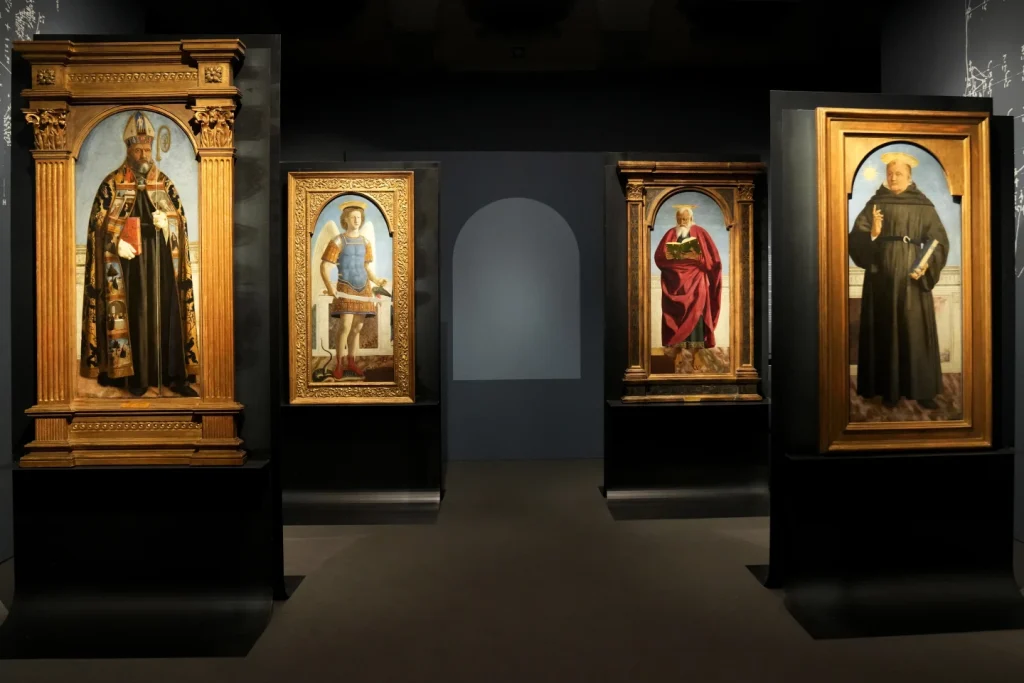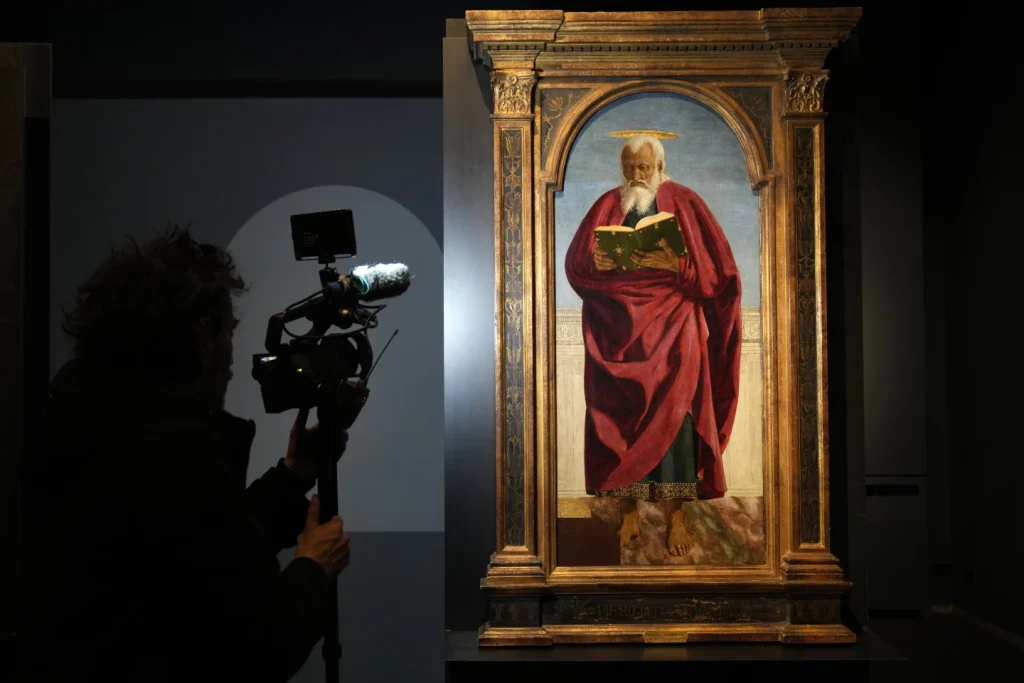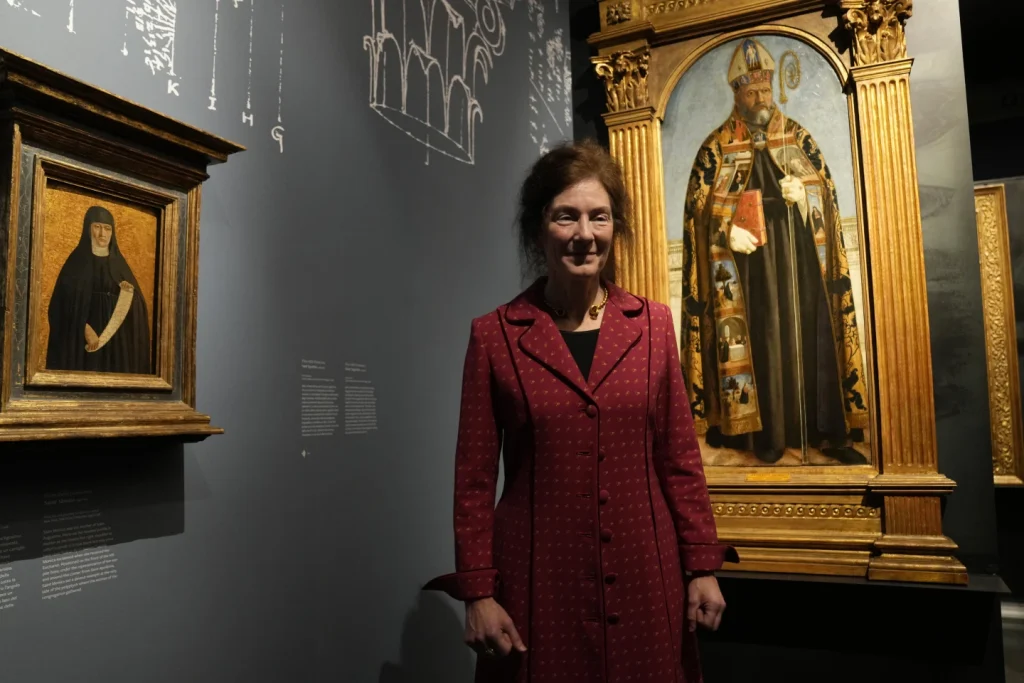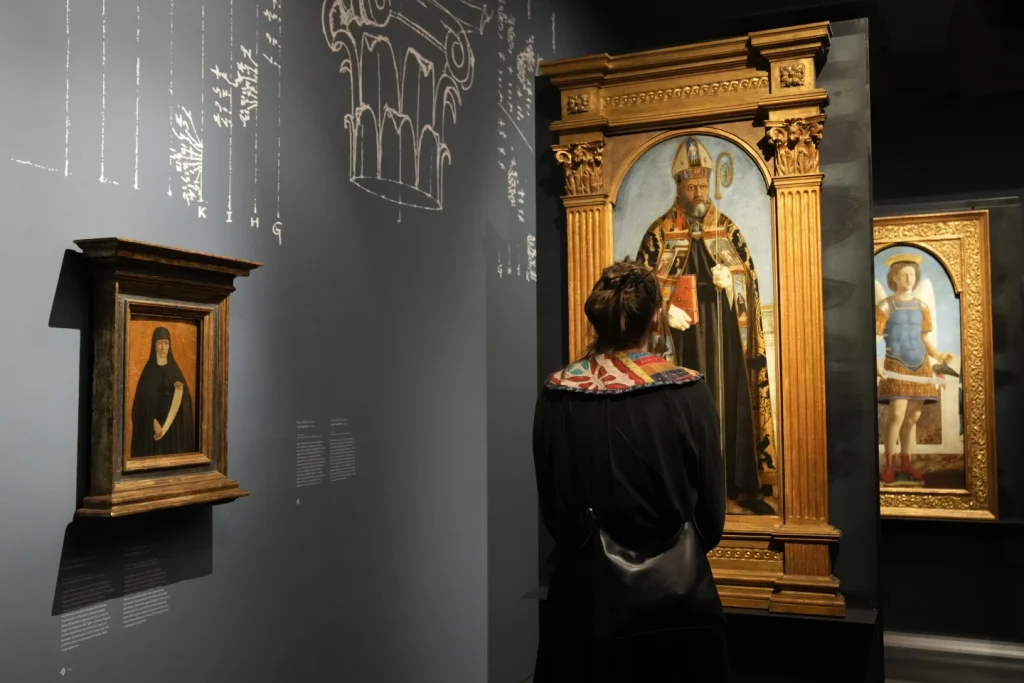The art world is abuzz with excitement as the Poldi Pezzoli Museum in Milan presents an extraordinary exhibition that marks a historic moment in art history.
After over four centuries, eight surviving panels of the Augustinian Altarpiece by the renowned early Italian Renaissance master Piero della Francesca have been reunited, shedding new light on one of the most enduring mysteries in the art world.
The Augustinian Altarpiece, originally a 30-piece polyptych, has long captured the imagination of art enthusiasts and scholars alike.
However, attempts to assemble the scattered panels have been met with challenges and setbacks over the years. Previous endeavors by various museums, including the Poldi Pezzoli Museum and the Hermitage in St.
Petersburg, have fallen short of bringing together the dispersed panels. It was not until now that a breakthrough was achieved, thanks to the dedication and perseverance of museum director Alessandra Quarto and her team.
The exhibition at the Poldi Pezzoli Museum showcases four large panels of saints set against a striking blue backdrop, with a conspicuous void where the central panel once stood.
This missing piece, shrouded in mystery for centuries, has intrigued art historians and connoisseurs alike. The absence of any sketches or records pertaining to the central panel has only added to its enigmatic allure.
One of the most significant revelations to emerge from the recent scientific study conducted in preparation for the exhibition is the proposed subject of the missing central panel.
Contrary to long-held beliefs, it is now suggested that the central panel depicted the coronation of the Virgin, rather than the Virgin and Child enthroned.
This groundbreaking discovery has reshaped our understanding of the altarpiece and shed new light on Piero della Francesca’s artistic vision.

Infrared and stereomicroscopic studies have played a crucial role in unraveling the mysteries surrounding the Augustinian Altarpiece.
Traces of two wings, one pink and one blue, on the flanking panels hint at the presence of angels in the original composition.
The removal of these wings during the altarpiece’s disassembly has long puzzled experts, but recent findings have provided valuable insights into the altarpiece’s intricate design and symbolism.
The reunification of the Augustinian Altarpiece panels at the Poldi Pezzoli Museum represents a triumph of art historical scholarship and collaborative effort.
Through meticulous research and technical analysis, the exhibition has not only brought together scattered fragments of a masterpiece but also unveiled new dimensions of Piero della Francesca’s genius.
As visitors marvel at the resplendent panels and ponder the enigmatic central void, they are reminded of the enduring power of art to captivate, inspire, and challenge our perceptions of the past.
The recent discovery of the image of a foot beneath a brocade dress on the left panel of the National Gallery, London’s St.
Michael the Archangel, along with a similar step and corresponding angel wing on the opposite panel, The Frick Collection’s St. John the Evangelist, has sparked significant interest among art experts and enthusiasts alike.
These findings suggest a kneeling central figure of the Virgin, a common motif in depictions of the coronation.

Co-curators involved in the study, such as Nathaniel Silver of the Isabella Stewart Gardner Museum in Boston, have expressed their excitement at the breakthrough.
Silver described the discovery as a “huge ah-ha moment,” noting that while the pink and blue paint fragments of the wings had been previously detected, their significance had not been fully understood until now.
The surviving technical evidence has now added weight to the argument regarding the interpretation of these images.
The altarpiece, commissioned by Augustinian hermits in Piero della Francesca’s native Borgo San Sepolcro in 1454, held a significant place in its original church for less than a century.
Following a period of disfavor for such depictions, the altarpiece was eventually disassembled after being moved to another church. Despite its fragmented history, a panel from the altarpiece surfaced in a private collection in San Sepolcro as early as 1620.
The exhibition showcasing the four major panels of the altarpiece, which turned up in Milan in the 1800s, has reignited hopes of potentially rediscovering missing pieces.
However, the whereabouts of the prized central panel, along with several others, including a smaller piece, have remained elusive for centuries.
Xavier Salomon, deputy director and chief curator of The Frick Collection in New York, remains cautiously optimistic about the possibility of these missing panels resurfacing, suggesting that they may still exist in hidden corners awaiting rediscovery.
The potential for uncovering these lost panels has sparked intrigue within the art community, with experts and curators alike expressing a sense of cautious optimism tempered with the acknowledgment of the challenges involved in such endeavors.

As the exhibition runs through June 24, there is a palpable sense of anticipation surrounding the possibility of reuniting the scattered pieces of this historic altarpiece.
The call to those in Milan with attics to explore the possibility of stumbling upon these missing panels serves as a testament to the enduring allure of art history and the ongoing quest for rediscovery and preservation.
